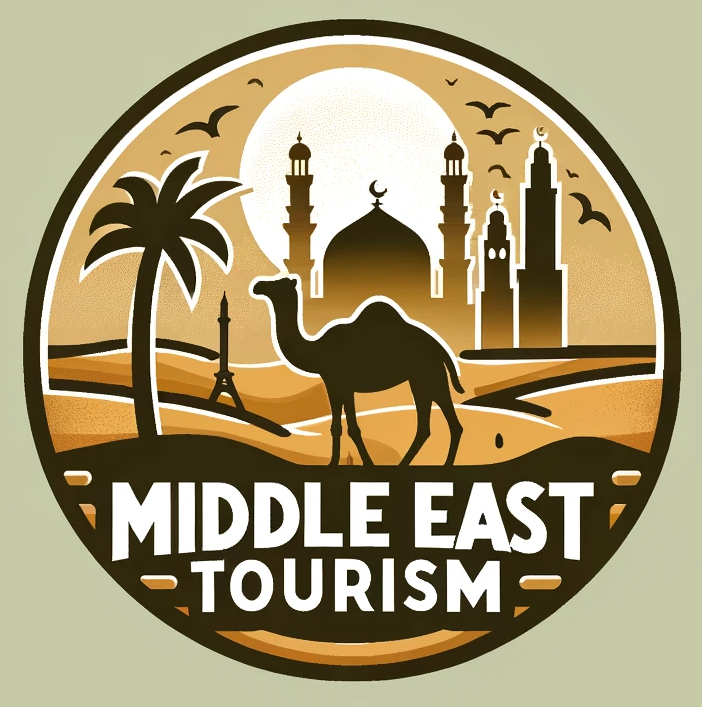Embark on a journey through time and trade as we uncover the ancient routes that shaped tourism in the Middle East. Join me as we explore the intricate connections between commerce and culture, weaving a tale of adventure and discovery along ancient trade paths. Let’s delve into the past to uncover how these historical routes continue to inspire and influence tourism in the region today.
ancient trade routes in the Middle East

The Middle East has a rich history of ancient trade routes that have connected civilizations and cultures for centuries. From the Silk Road to the Incense Route, these routes played a significant role in shaping the region and influencing trade, economy, and culture. Let’s delve into the exploration of these ancient trade routes in the Middle East and uncover their historical significance.
The Silk Road: Bridging East and West
Silk Road, the legendary trade route that connected the East and West, passing through the heart of the Middle East. Traders traveled this route to exchange goods, ideas, and cultures between China, India, the Middle East, and Europe. From the bustling markets of Ladakh in India to the majestic ancient city of Petra in Jordan, the Silk Road left its mark on numerous regions along its path.
The Incense Route: A Fragrant Journey
Incense Route, another important trade network in the Middle East, was used to transport precious frankincense and myrrh from southern Arabia to the Mediterranean. This route not only facilitated trade but also contributed to the growth of civilizations and the spread of religious practices. Exploring the remnants of the Incense Route offers a glimpse into the ancient trade practices and the cultural exchanges that took place.
Modern Trade Routes: Reviving Ancient Connections
While the ancient trade routes have faded into history, their legacy continues to inspire contemporary trade and cultural exchange. Artists along the modern Silk Road are reviving the spirit of ancient commerce through music, art, and performances. The Belt and Road Initiative, a modern infrastructure project, echoes the ancient Silk Road’s ambition to connect nations and build economic partnerships.
– Sounds of The Silk Road: Five artists defining the modern trade route
– Fact Box: Assessing the Key Elements of the Belt and Road Initiative
Uncovering Trade Route Mysteries
Exploring the ancient trade routes in the Middle East also involves unraveling historical mysteries and discovering hidden treasures. Carbon-dated camel bones shed light on the transportation methods used along these routes, while archaeological sites like the Red Land in Egypt reveal ancient trade practices and cultural interactions.
– Bible Wins Debate: Carbon-Dated Camel Bones
– Exploring the Red Land: An ancient valley & the Ababda sky-reading secrets
In conclusion, exploring ancient trade routes in the Middle East offers a fascinating journey through time and space, highlighting the interconnectedness of civilizations and the enduring impact of trade on cultural exchange and economic development. As travelers venture along these historic routes, they embark on a quest to uncover the stories of the past and appreciate the legacy of trade that continues to shape the region today.
Silk Road and Incense Route

Uncovering Silk and Incense Routes
The Silk Road and the Incense Route are two ancient trade networks that have shaped the cultural and economic landscapes of the Middle East and beyond. These routes were not only conduits for the exchange of goods but also served as highways of cultural exchange and innovation.
The Silk Road: Tales of Silken Times
The Silk Road, a historic network of trade routes, connected the East and West, facilitating the exchange of goods, ideas, and culture. Known for the luxurious silk that was traded along its paths, this route stretched from China to the Mediterranean. Recent archaeological discoveries have shed light on the significance of the Silk Road, with findings of 1300-year-old luxurious fabrics in the Arava region offering tangible proof of the route’s existence.
– Archaeologists Find Exotic Imports in Trash Pile on ‘Israeli Silk Road’ – Archaeology
– Jaisalmer And The Silk Route: An Intimate Acquaintance In The Desert
The Incense Route: Desert Cities in the Negev
The Incense Route, another important trade route in the Middle East, enabled the transportation of precious incense from southern Arabia to the Mediterranean region. This route passed through the desert cities of the Negev, showcasing the resilience of ancient traders who navigated harsh terrains to transport valuable commodities. Jeddah’s upcoming ‘Saudi India Festival’ on Jan. 19 is a testament to the enduring legacy of trade relations in the region.
– Incense Route – Desert Cities in the Negev
Exploring these trade routes offers a glimpse into the rich history of commerce and cultural exchange that has shaped the Middle East and beyond. The Silk Road and Incense Route stand as testaments to the ingenuity and enterprise of ancient civilizations, highlighting the enduring legacy of trade in the region.
impact on cultural exchange

The exchange of goods, ideas, and cultures along ancient trade routes has had a profound impact on shaping the world we live in today. From the Silk Road to the Spice Route, these historic pathways enabled not only the trade of commodities but also facilitated a rich exchange of cultural practices, languages, and traditions.
Unesco World Heritage Bid: Indonesia and Qatar’s Collaboration
– Indonesia’s Unesco World Heritage bid supported by Years of Culture
– Qatar and Indonesia partner to seek UNESCO recognition for historic Spice Route
Indonesia and Qatar’s collaboration to seek UNESCO recognition for the historic Spice Route highlights the significance of trade routes in promoting cultural exchange. By showcasing the cultural heritage and historical importance of these routes, countries are not only preserving their own history but also fostering international cooperation and understanding.
China’s Influence in Central Asia: A Global Perspective
– How China is increasing its influence in central Asia as part of the global plans to offer an alternative to the west
China’s efforts to enhance its influence in central Asia as part of global plans signify a shift in power dynamics along trade routes. As China expands its economic footprint, it brings with it not only goods and services but also cultural influences that shape the local traditions and practices, contributing to a more interconnected world.
The Silk Road: A Gateway to Cultural Diversity
– The Spread of Disease along the Silk Roads | Silk Roads Programme
– Tehran conference to look at Silk Road cultural heritage
The Silk Road, known for its historical significance in connecting the East and West, played a vital role in the exchange of goods and ideas. However, it also facilitated the spread of diseases, highlighting the interconnectedness of cultures along trade routes. The upcoming Tehran conference aims to explore the cultural heritage of the Silk Road, shedding light on its impact on shaping diverse societies.
Exploration and Diaspora: Legacy of Trade Routes
– How the Trans-Atlantic Slave Trade Created the African Diaspora | HISTORY
– Did the Age of Exploration bring more harm than good?
The Trans-Atlantic Slave Trade and the Age of Exploration are stark reminders of the darker aspects of trade routes, where exploitation and suffering coexisted with cultural exchange. These historical events not only reshaped populations and societies but also left a lasting impact on cultural identities and diasporas around the world.
Modern Trends: From Silk Roads to Cyber Highways
– Internet as the new Silk Road for the new decade
– Ethiopia, Kenya political and economic relations – New Business Ethiopia
In the digital age, the internet has emerged as a new Silk Road, connecting people and ideas across borders in an instant. As countries like Ethiopia and Kenya strengthen their political and economic relations, the virtual landscape becomes a breeding ground for cultural exchange, echoing the legacy of ancient trade routes in a modern context.
Trade routes have always been more than just pathways for commerce. They are conduits of cultural exchange, shaping the identities of societies and fostering a global interconnectedness that transcends borders and time. The impact of trade routes on cultural exchange continues to resonate in our contemporary world, reminding us of the enduring legacy of past interactions on our present-day realities.



